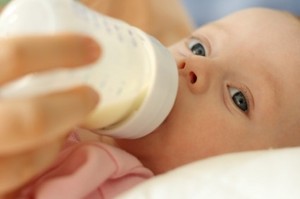Cartoon characters: not a European issue?
New research published in the Journal of Pediatrics and Adolescent Medicine this week found that US children tend to prefer the taste of cereal when the packaging features popular cartoon characters, a conclusion that doesn’t appear to have taken anyone by surprise, not least European consumer organisation BEUC.
“We are not surprised by the results,” Ophélie Spanneut, a spokesperson for the BEUC, told FoodNavigator. “Those products are particularly targeted at children and are designed to attract their attention.”
The UK’s Advertising Association may not always see eye to eye with the BEUC, but on the subject of this study, it agrees that the findings are unsurprising.
“We know cartoons are good fun and kids like them – we don’t need research to tell us that. In tackling obesity there are a million and one things to look at before cartoons on cereal boxes,” said Ian Barber, who is responsible for the food advertising unit with the Advertising Association.
He added that there are already strict guidelines in place that food companies have to adhere to when marketing products to children.
Spanneut agrees that the self regulation framework currently in place in Europe should address the issues raised by the research, but warns that “if in the future it proves this approach is not working, we will call for stricter regulation.”
Keen to be responsible
It is clear that the food industry does not take the threat of tighter regulation lightly and is keen to demonstrate a responsible approach to using cartoon characters.
A spokesperson for breakfast cereal manufacturer Kellogg’s told FoodNavigator: “Our equity characters are part of our brand recognition and we use them appropriately and responsibly. Kellogg does not market to children under six, the population included in the study.”
The finding that children were more likely to enjoy the taste of foods when they were branded with cartoon characters was just one conclusion that came out of the study. A second, arguably more interesting finding was that children who were presented with a cereal branded as ‘Healthy Bits’ reported liking it more than those who were presented with a cereal named ‘Sugar Bits’.
“It is encouraging that kids seem to be responding positively to healthy messages, and in the UK, food producers are responding to that by massively reducing the sugar levels of cereals and promoting healthier cereals with characters,” said Barber.
In terms of next steps, the Pennsylvania researchers told FoodNavigator there are still more avenues to explore on the subject of the influence of media characters on children.
“There are so many questions that beg to be answered now,” said Sarah Vaala, one of the researchers. “How do these characters affect children's actual eating behaviour in the home? At what age does the influence of a spokes-character on children's experience of product taste disappear? Does familiarity with the character matter? Does the child's media diet play a role? And is there any way to counter the appeal of a character on the packaging?”
















